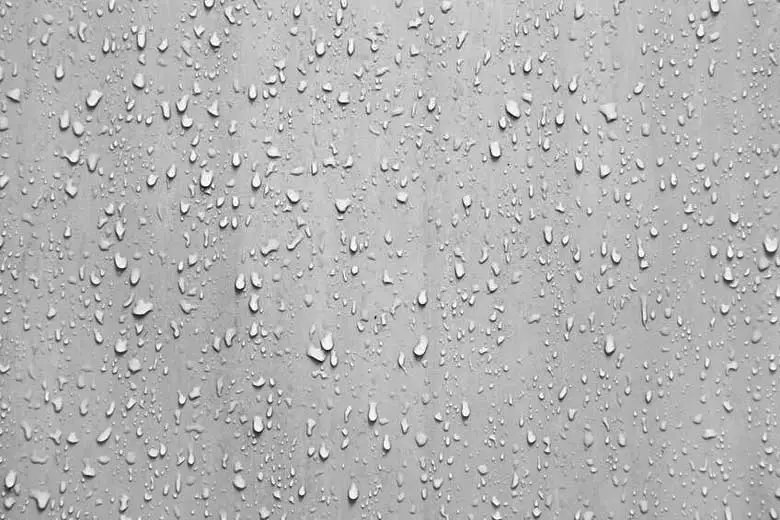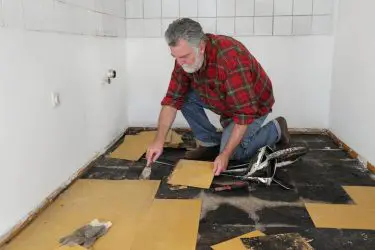If you are not a concrete finisher or familiar with concrete at all, concrete sweating can be a daunting and unfamiliar display. Although concrete appears to be a safe and sturdy foundation, the presence of concrete sweat can greatly alter its surface, which can result in many potential hazards and costs.
Concrete sweat, properly known as sweating slab syndrome (SSS), results from condensation that forms from warm outdoor temperatures and cooler indoor temperatures. When the warm and humid outside air comes in contact with a cool concrete surface, the air cools quickly and forms exterior water droplets.
When we know the science as to why concrete sweat forms, we can put measures into place that can help solve this problem. Effectively managing sweating slab syndrome can alleviate much worry and provide safer conditions.

Table of Contents
Why does concrete sweat?
Concrete sweating is most common in buildings that are not temperature regulated and with many open surface concrete slabs. These are usually warehouses, garages, and buildings that are in construction.
Since high humidity combined with warm air is a strong predictor of concrete sweating, location plays a big part in the formation of condensation on concrete.
Areas such as Louisiana and Florida are more prone to the development of concrete sweating. Their geographical location, where high humidity and temperature occur, increase the chance of condensation to form on indoor concrete surfaces.
While we know that the main reason for concrete sweating has to do with air and concrete temperature, there is another rare possibility and it has to do with subsurface moisture.
Concrete may appear to be solid and impermeable, but it is actually porous in its structure. Moisture underneath can move upward through the concrete through hydro static pressure, resulting in water droplets forming on the surface.
Although this is a possibility, it is a rare circumstance when this takes place.
Dangers With Sweating Concrete
There are many dangers when it comes to concrete sweat with the most common being a slipping hazard. Water droplets combined with a smooth concrete floor is a mighty fine recipe for a makeshift ice rink.
Since water is a clear substance, it can be far too easy for individuals to walk on concrete that is wet without even knowing until they hit a certain spot with their foot, and they feel like Humpty Dumpty falling to the ground.
Large operating equipment, such as a forklift, can also lose control on wet surfaces and cause severe damage or even death.
Brain injuries and broken bones are the most common result of a slip and fall (Source). Employers cannot afford to neglect safety measures in effect to combat concrete sweating.
Large warehouses are often used for manufacturing and production. Companies need to be aware of the risk of concrete sweating to avoid putting their employees in danger and have the risk of being a defendant in a lawsuit.
Mold is another potential hazard that can result from wet concrete surfaces. The moistened concrete can serve as the perfect environment for mold growth, especially indoors. Allergies and pulmonary diseases can result from breathing in the harmful toxins of mold.
Wood and cardboard objects sitting on the wet concrete can also harbor mold growth and become damaged by the excess water. This can also be very costly to companies with large pallets or boxes of products sitting on a sweating concrete floor.
An alkali silica reaction (ASR) is when concrete swells over a duration of time due to the highly alkaline cement past and the reactive amorphous found in many common aggregates, provided with sufficient moisture (Source).
When high pH subsurface moisture seeps through the concrete from below, it can cause permanent damage to concrete.
How To Stop Concrete Sweating
It is important to take certain factors into consideration and put measures in place beforehand to prevent concrete sweating to save on cost and time.
Reduce Moisture
Reducing moisture indoors will greatly reduce the chance of concrete sweating becoming a problem.
Sealing all outside air entrances will also help to keep the humidity low and prevent condensation from forming.
To cut out the chance of concrete sweating to be a result of subsurface moisture, before installing concrete you can lay down a plastic barrier to work as a vapor and moisture barricade. This will reduce the risk of water seeping through from below and decrease the humidity of the location.
Increase Air Circulation
Air circulation near the floor is imperative to prevent condensation from forming. This is a cheap yet effective option for those trying to keep their indoors dry and safe.
The movement of the fan will keep the air dryer and circulating.
Use a dehumidifier
Although dehumidifiers are costly, they can be hugely effective in preventing moisture indoors. They work to bring down the humidity by filtering the air and taking out water in the air.
Commercial grade dehumidifiers are a smart choice for large buildings.
Turn Up The Heat
Reducing the use of air conditioning and keeping the temperature warmer will help the air to be the same temperature as the concrete.
This will help the condensation to not form because the high contrast in air and surface temperature will no longer be present.



